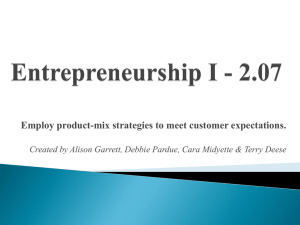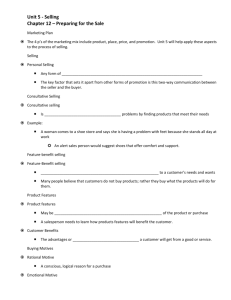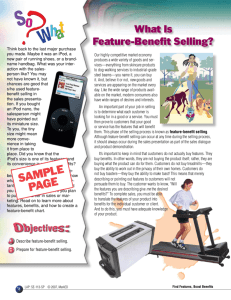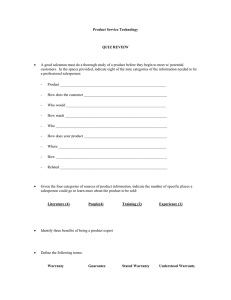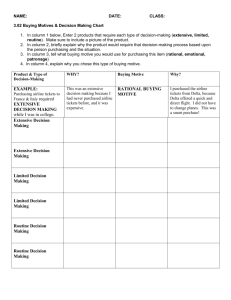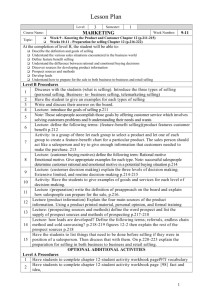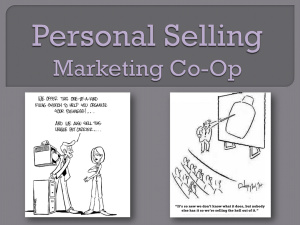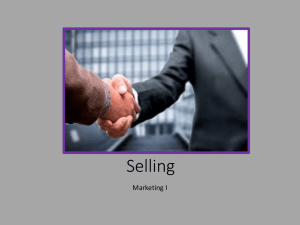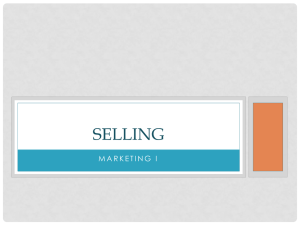Preparing for the Sale Chapter 12
advertisement
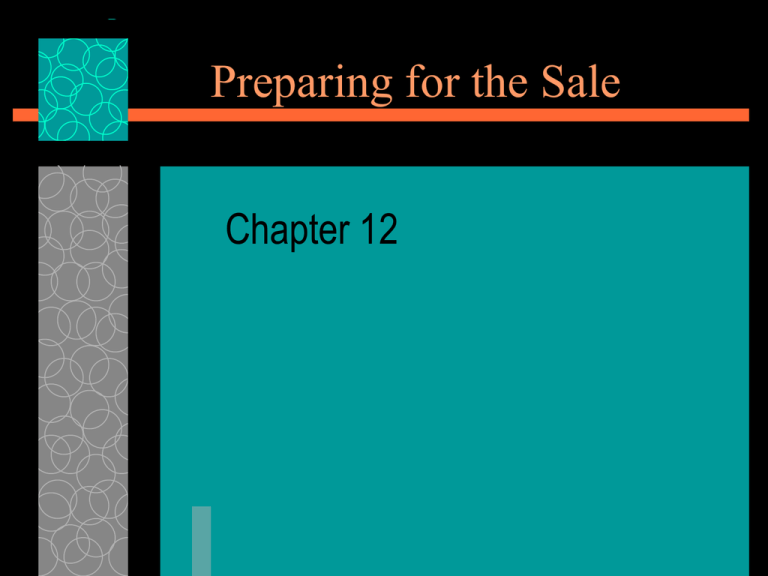
Preparing for the Sale Chapter 12 Ch 12 Sec.1 – What is Selling? What You’ll Learn The definition and goals of selling The various sales situations encountered in the business world The definition of feature-benefit selling How customers make decisions and the difference between rational and emotional buying decisions Selling Personal Selling – any form of direct contact between a salesperson and a customer Retail Selling – customers come to the store Business-to-business Selling – takes place in a manufacturer’s or wholesaler’s showroom or a customer’s place of business Telemarketing – selling over the telephone – National Do Not Call Registry, established by the FTC in 2003 Goals of Selling Help customers make satisfying buying decisions, which create ongoing, profitable relationships between buyer and seller. Repeat business is crucial to the success of any company Consultative Selling Providing solutions to customers’ problems by finding products that meet their needs. Problem – Customer stands all day on her new job and her feet hurt. Solution – Salesperson suggests shoes designed for comfort and support. Feature-Benefit Selling Customers don’t buy products – they buy what products can do for them. Product Features May be basic, physical, or extended attributes The most basic feature is the product’s intended use Additional features add more value to the product Obvious Feature This car is a bright shade of red. Customer Benefits The advantages or personal satisfaction a customer will get from a good or service Benefits become selling points How does the feature help the product’s performance? How does the performance information give the customer a personal reason to buy? Obvious Benefit This bright red car will attract the guys/girls Unique or Exclusive Benefits Our cars are so safe, we guarantee you won’t be crushed in a crash from the side. Feature Benefit Chart A list of a product’s features and associated benefits. Feature Benefit Chart Feature Benefit Chart Choose an item and list at least five features and benefits. Customer Buying Motives What motivates the customer to buy? Rational Motive – a conscious, logical reason for a purchase Emotional Motive – feelings such as social approval, recognition, power, love, or prestige Customer Decision Making Extensive Decision Making – used when there has been little or no previous experience with the item – High risk items – Very expensive – High value to the customer Limited Decision Making – when a person buys goods and services that he or she has purchased before but not regularly – Moderate degree of risk – Person needs some information before buying the product Routine Decision Making – person needs little information about a product – High degree of prior experience – Little perceived risk

